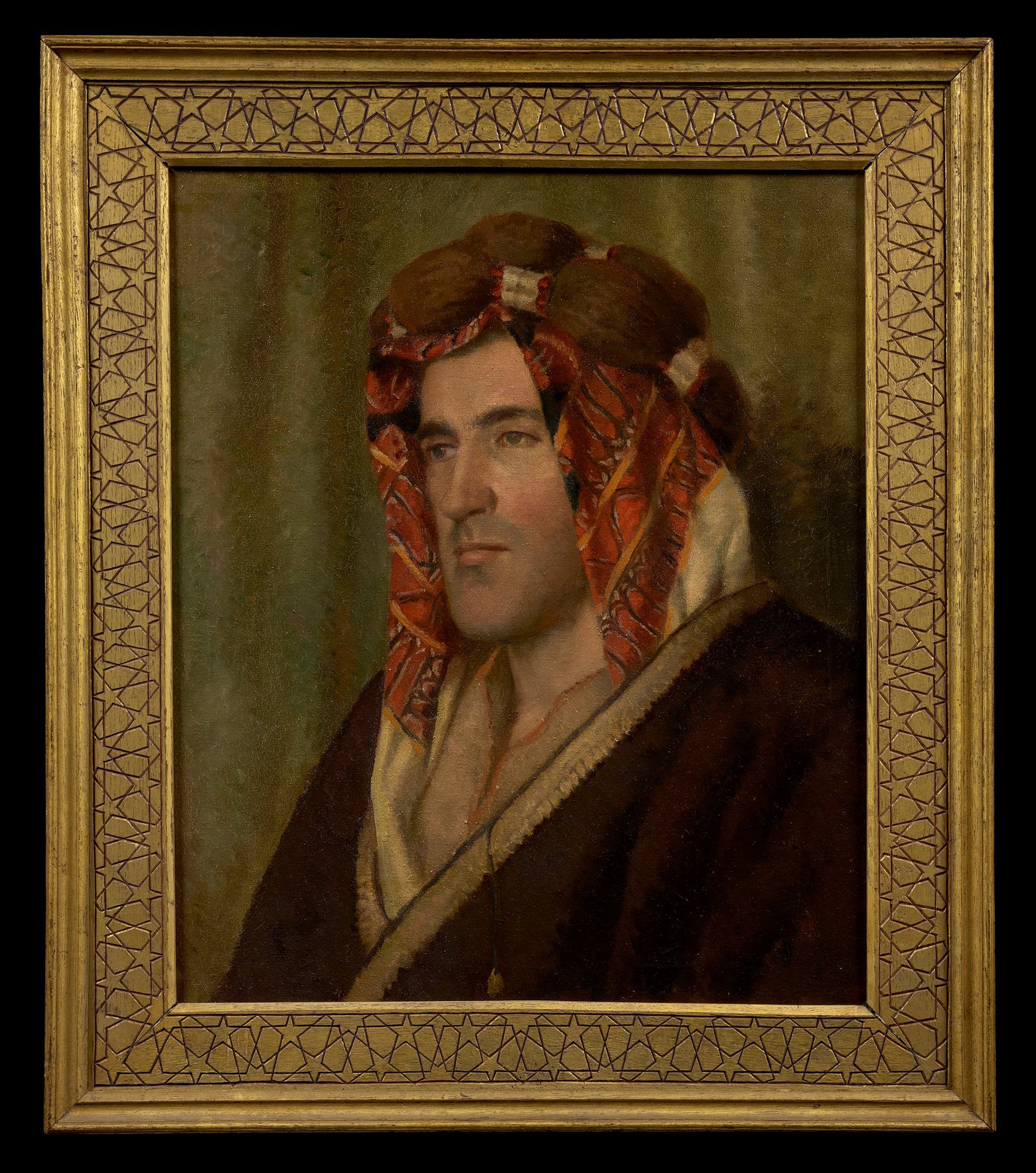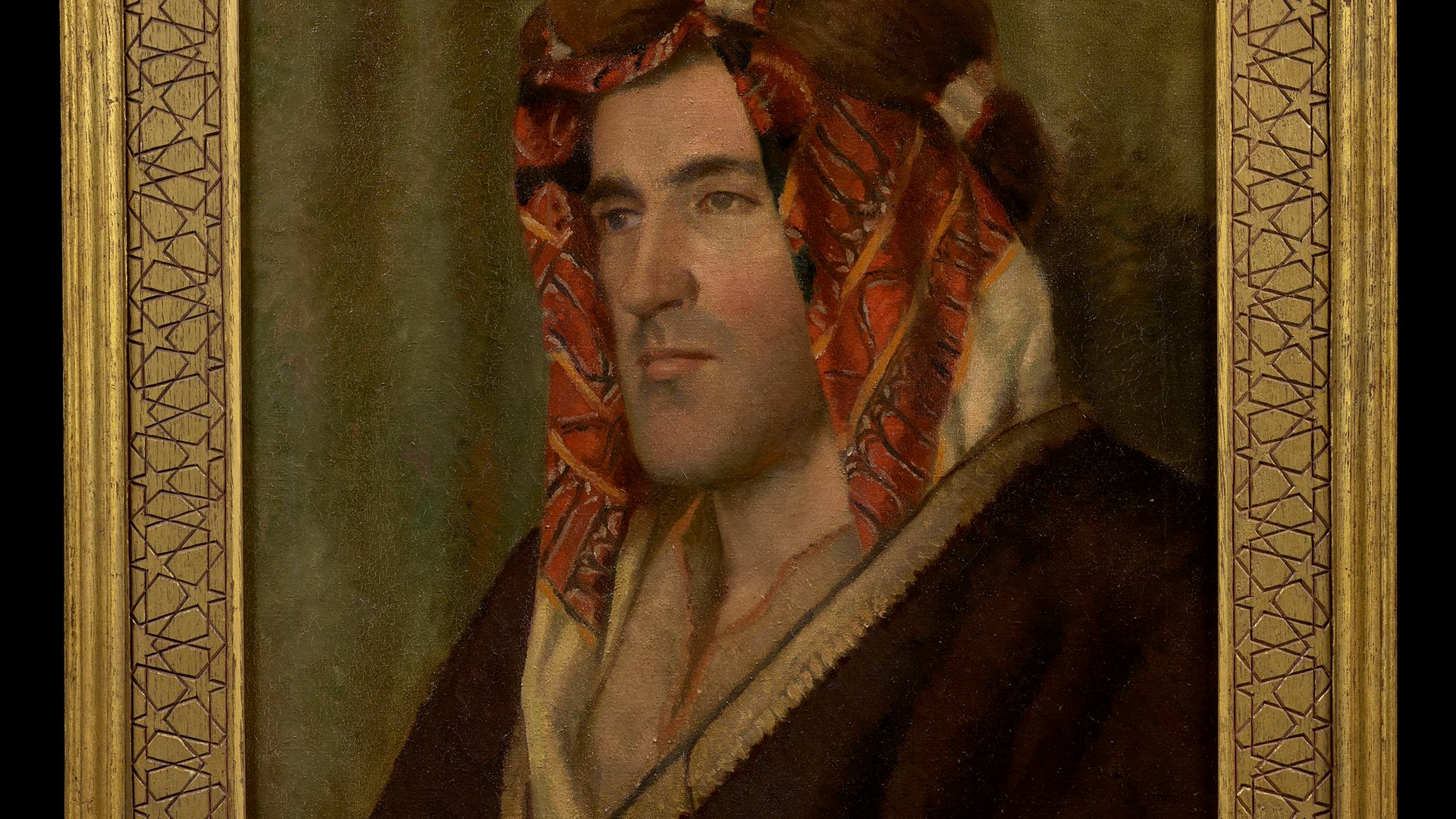

Thomas Edward Lawrence (1888-1935) or ‘Lawrence of Arabia’ as he is better known, was a
British archaeological scholar, military strategist, and author. One of the most captivating figures of the 20th century, Lawrence is remembered for his legendary war activities in the Middle East during World War I, and for his own account of these adventures in The Seven Pillars of Wisdom (1926).
Lawrence’s numerous accomplishments were quite extraordinary, and he became a mythic figure in his own lifetime, even before he published The Seven Pillars of Wisdom. More than a military leader and inspirational force behind the Arab revolt against the Turks, he was a superb tactician and a highly influential theoretician of guerrilla warfare. Besides The Seven Pillars of Wisdom, his sharply etched service chronicle, The Mint, and his mannered prose translation of the Odyssey added to a literary reputation further substantiated by an immense correspondence that establishes him as one of the major letter writers of his generation.
This previously unknown portrait of Lawrence captures a sincere likeness of a genius, which is at once both intimate and immediate, highlighting his humility in the face of fame. Indeed, part of the character that so intrigued the public was Lawrence’s ability to deny himself recognition for his achievements, preferring to shy away from the limelight. This reached a culmination in 1923 when he took the name T E Shaw, in an attempt to avoid publicity and anonymously join the Royal Tanks Corps.
Lawrence is depicted by Tunnicliffe in traditional Arab dress – the style with which he became synonymous. As well as his military prowess, Lawrence is also remembered for his great diplomacy, mostly for the relationship he was able to build with Emir Feisal, a son of Sherif Hussein of Mecca and an important commander. It was because of this relationship that Lawrence was able to exert influence on both Feisal and Abdullah I, to support Britain during the Arab Revolts against the Ottoman Empire. Key to this diplomatic strategy, and to the friendship, was Lawrence’s willingness to adapt to Arabic culture – including speaking their language, living with them, and adopting their customs and their dress. His depiction here in traditional Arabic dress therefore is symbolic of this original, effective and modern approach.
Tunnicliffe and Lawrence had a mutual friend in Henry Williamson (1895-1977) and this is presumably how they became acquainted. In 1927 Williamson published his critically acclaimed novel Tarka the Otter, which became the first of many of Williamson’s books that Tunnicliffe was to illustrate. Williamson had served for the duration of the First World War and witnessing its horrors, came to believe like Lawrence, in the need for a lasting peace settlement in Europe. Williamson himself sat for Tunnicliffe in June 1934, suggesting a similar date therefore for the present painting.
Tunnicliffe had studied at the Royal College of Art during the 1920s where his tutors included the renowned portraitist Sir William Rothenstein and wood-engraver Paul Nash. He was part of a ‘golden age’ of British art schooling at the RCA with fellow students including the painters Eric Ravilious (with whom he shared lodgings during their studies), Edward Bawden and Edward Burra, and the sculptors, Henry Moore and Barbara Hepworth. The wonderful colour range and style of this arresting portrait of Lawrence is symptomatic of the prevailing currents in figurative art of the period and the artistic milieu within which Tunnicliffe found himself at this time.
British archaeological scholar, military strategist, and author. One of the most captivating figures of the 20th century, Lawrence is remembered for his legendary war activities in the Middle East during World War I, and for his own account of these adventures in The Seven Pillars of Wisdom (1926).
Lawrence’s numerous accomplishments were quite extraordinary, and he became a mythic figure in his own lifetime, even before he published The Seven Pillars of Wisdom. More than a military leader and inspirational force behind the Arab revolt against the Turks, he was a superb tactician and a highly influential theoretician of guerrilla warfare. Besides The Seven Pillars of Wisdom, his sharply etched service chronicle, The Mint, and his mannered prose translation of the Odyssey added to a literary reputation further substantiated by an immense correspondence that establishes him as one of the major letter writers of his generation.
This previously unknown portrait of Lawrence captures a sincere likeness of a genius, which is at once both intimate and immediate, highlighting his humility in the face of fame. Indeed, part of the character that so intrigued the public was Lawrence’s ability to deny himself recognition for his achievements, preferring to shy away from the limelight. This reached a culmination in 1923 when he took the name T E Shaw, in an attempt to avoid publicity and anonymously join the Royal Tanks Corps.
Lawrence is depicted by Tunnicliffe in traditional Arab dress – the style with which he became synonymous. As well as his military prowess, Lawrence is also remembered for his great diplomacy, mostly for the relationship he was able to build with Emir Feisal, a son of Sherif Hussein of Mecca and an important commander. It was because of this relationship that Lawrence was able to exert influence on both Feisal and Abdullah I, to support Britain during the Arab Revolts against the Ottoman Empire. Key to this diplomatic strategy, and to the friendship, was Lawrence’s willingness to adapt to Arabic culture – including speaking their language, living with them, and adopting their customs and their dress. His depiction here in traditional Arabic dress therefore is symbolic of this original, effective and modern approach.
Tunnicliffe and Lawrence had a mutual friend in Henry Williamson (1895-1977) and this is presumably how they became acquainted. In 1927 Williamson published his critically acclaimed novel Tarka the Otter, which became the first of many of Williamson’s books that Tunnicliffe was to illustrate. Williamson had served for the duration of the First World War and witnessing its horrors, came to believe like Lawrence, in the need for a lasting peace settlement in Europe. Williamson himself sat for Tunnicliffe in June 1934, suggesting a similar date therefore for the present painting.
Tunnicliffe had studied at the Royal College of Art during the 1920s where his tutors included the renowned portraitist Sir William Rothenstein and wood-engraver Paul Nash. He was part of a ‘golden age’ of British art schooling at the RCA with fellow students including the painters Eric Ravilious (with whom he shared lodgings during their studies), Edward Bawden and Edward Burra, and the sculptors, Henry Moore and Barbara Hepworth. The wonderful colour range and style of this arresting portrait of Lawrence is symptomatic of the prevailing currents in figurative art of the period and the artistic milieu within which Tunnicliffe found himself at this time.